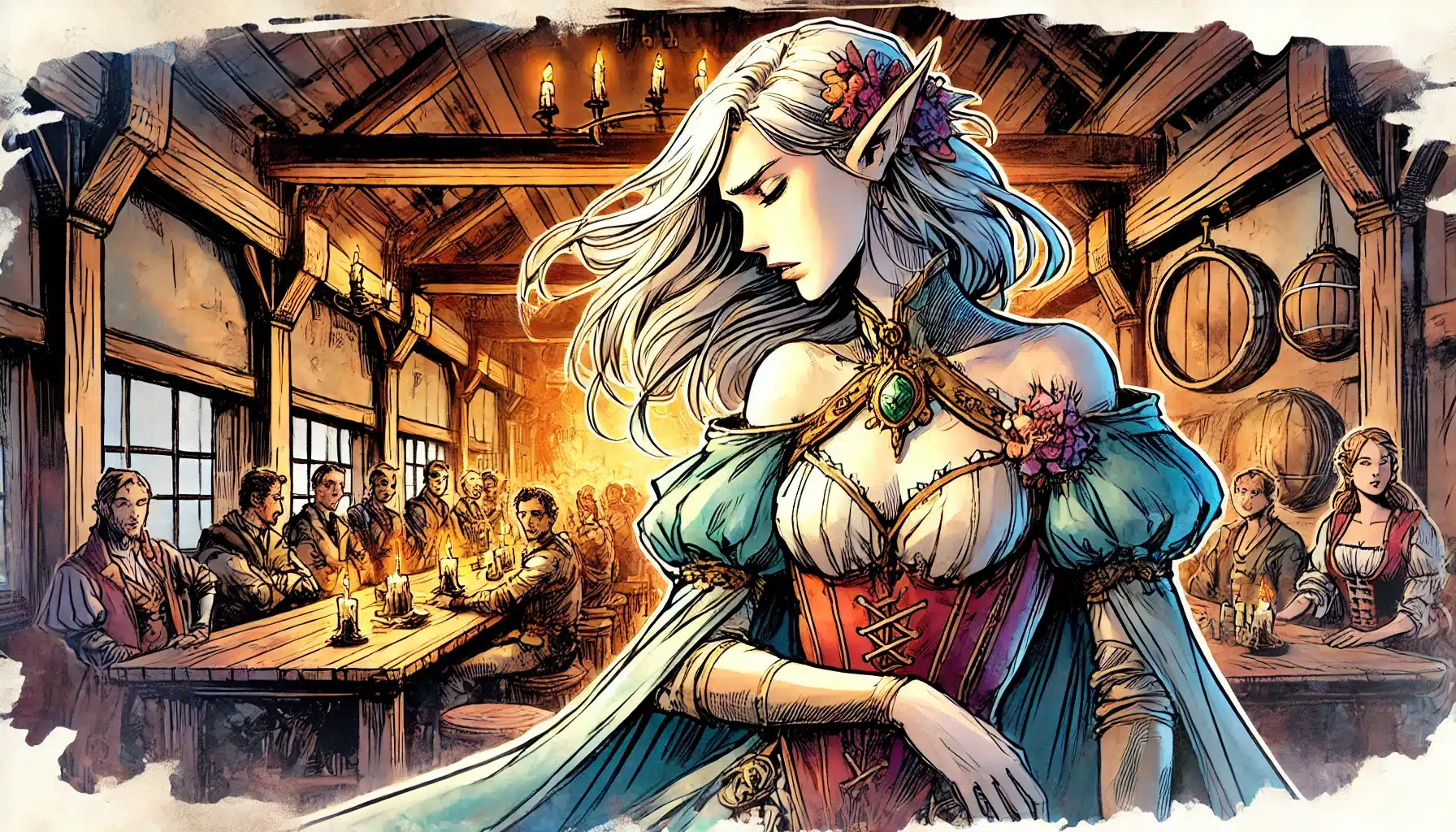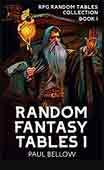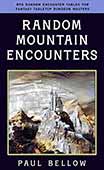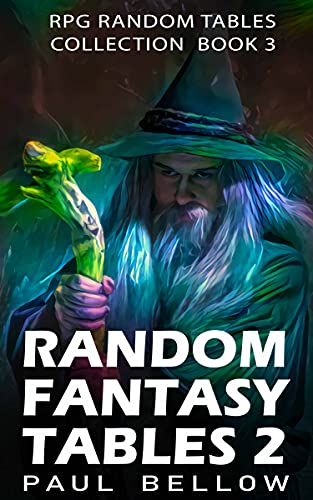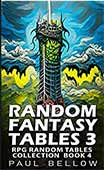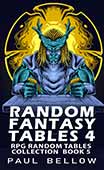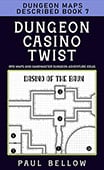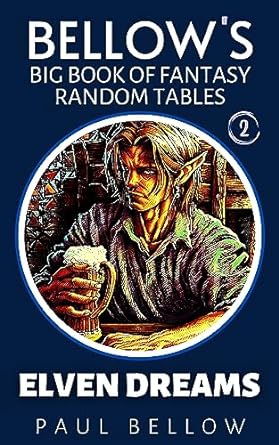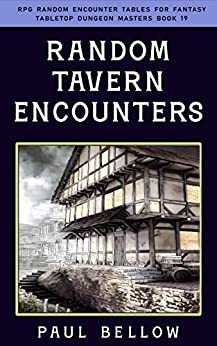In Dungeons & Dragons, creating a compelling character isn’t just about choosing a race and class. It’s about crafting a persona that’s vibrant and engaging, one that leaps off the character sheet and into the unfolding story of the campaign. This creation process hinges crucially on understanding the dual forces of traits and flaws. Traits are like the bright brushstrokes in a painting, highlighting a character’s strengths, quirks, and charms. They represent the qualities that make a character memorable, whether it’s their quick wit, boundless courage, or an unwavering code of honor.
On the flip side, flaws are the shadows that give depth to this character painting. They’re the limitations, the faults, and the struggles a character wrestles with. Flaws are what make them relatable, giving the DM and fellow players opportunities to explore stories filled with conflict and growth. They add realism and vulnerability, allowing other characters and the audience to connect deeply with what might otherwise be an invincible and unrelatable hero.
Balancing traits and flaws leads to a character who’s not just good on paper but who feels alive in every session. This balance is key for making a campaign that players want to return to, eager to see how these flawed heroes evolve. Characters with a blend of strong traits and impactful flaws offer rich narratives and dynamic role-play opportunities, pushing the envelope of the story forward. So, when you sit down to create a character, consider not only what they can do and excel at but also where they falter and stumble. It is in these moments of imperfection that we often find the most compelling stories.
Imagine you’re crafting a sorcerer who’s charismatic and clever, with a knack for charm spells. But, add a flaw like crippling self-doubt, and suddenly, their story takes a new and intriguing direction. Every encounter becomes more than just an opportunity to cast spells; it’s a chance for the character to confront and possibly overcome their inner demons. This dynamic interplay between traits and flaws ensures that each session brings something new to unpack and explore.
Ultimately, understanding the difference between flaws and traits and how to balance them allows players to dive deeper into the art of storytelling. Characters grow, change, and surprise not only those at the table but also their creators. By embracing this duality, you breathe life into figures that live in your imagination long after the dice have stopped rolling.
What Are Character Traits in D&D?
A character’s traits in Dungeons & Dragons are the magnetic qualities that draw others to them and set them apart from the nameless hordes. These traits are more than abilities or skills; they are pieces of personality that give a character their unique flavor. Traits can include everything from a character’s demeanor and speech patterns to their deeply held beliefs and whimsical habits.
Try my AI Tabletop RPG generators...and an extensive library of content!
For instance, perhaps your character has an unusually optimistic outlook, seeing the silver lining in every dark cloud. This optimism isn’t just a passive detail; it’s an active force that shapes how your character interacts with others, faces challenges, and influences the narrative. Maybe they have a peculiar ritual each morning that grounds them—like saying a prayer to the sunrise or performing a meticulous routine with their weapons. These little quirks might seem insignificant but can add layers to how the character is perceived and how they interact with the world around them.
Traits can reflect a character’s values, underlining what they hold dear and what drives them. A warrior who has sworn an oath to protect the innocent will have their actions colored by this self-imposed charge. Their valor becomes a defining trait that other characters in the campaign recognize, admire, or even exploit. Ultimately, traits are the bedrock upon which players build three-dimensional characters whose actions and decisions within the game create a vibrant tapestry of storytelling.
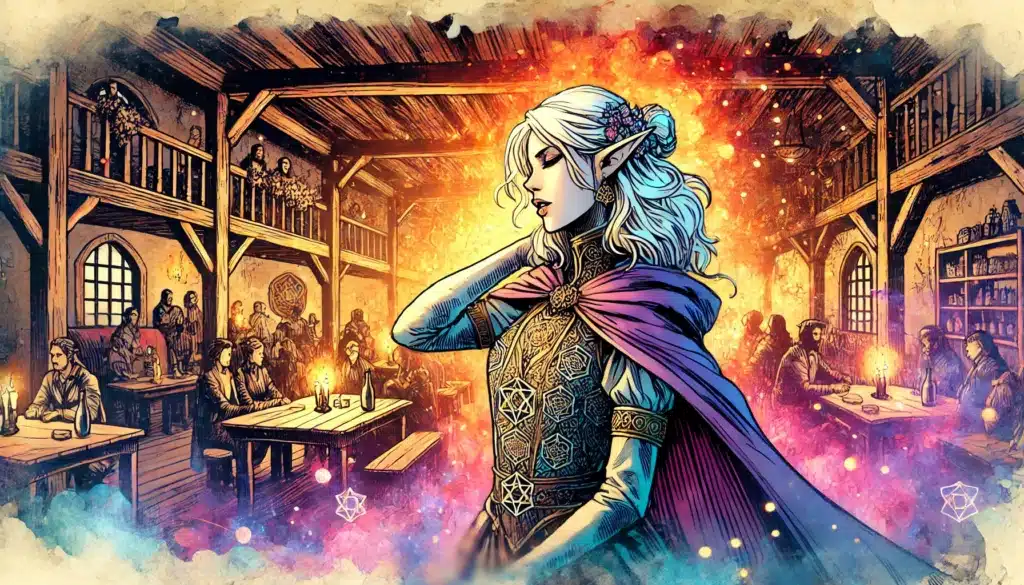
The Different Types of Character Traits
Character traits in D&D often land on the spectrum of positive to neutral, each contributing to the character’s persona in unique ways. Personality quirks, ideals, and bonds are common categories of traits players might choose from when crafting their characters.
Personality Quirks: These are the little idiosyncrasies that make characters memorable. For example, a character who constantly speaks in rhyme or always shakes their hair before battle could have everyone at the table waiting to see what’s next. These quirks add spice to interactions, making the character stand out even in a room full of extraordinary individuals.
⚔️ Fantasy RPG Random Tables Books
Make life as a Gamemaster easier…
If you play Dungeons & Dragons, Pathfinder, or other fantasy RPGs, this
RPG random tables series
is packed with encounters, NPCs, treasure, and more. Available in eBook or print—either way, you’ll have a wealth of adventure ideas at your fingertips.
Ideals: Ideals represent a character’s core beliefs and aspirations. They outline what a character may strive for and fight for throughout the campaign. An ideal might be “Justice,” driving a character to pursue fairness at all costs, or “Freedom,” pushing them to break the chains that bind them or others.
Bonds: Bonds are connections that tie a character to the world and its people. Whether it’s a fierce loyalty to a hometown or a personal vendetta against a nemesis, bonds pull characters into the plotlines and weave them into the larger narrative of the campaign. These ties can add emotional weight to otherwise simple quests and encounters.
Below is a table listing various types of character traits, their role in roleplay, and how they influence interactions:
| No. | Trait | Role in Roleplay | Influence on Interactions |
|---|---|---|---|
| 1 | Brave | Driving force in dangerous situations | Inspires others, fosters bold group strategies |
| 2 | Sarcastic | Adds humor, challenges authority or norms | Can provoke, amuse, or irritate fellow characters |
| 3 | Loyal | Forms strong party bonds, motivates protective acts | Creates trust, support networks within the party |
| 4 | Curious | Drives exploration and discovery | Encourages seeking out new paths or information |
| 5 | Stoic | Provides stability in chaotic environments | Offers calm reassurance in tense situations |
| 6 | Compassionate | Helps with healing and nurturing roles | Builds community and alliance through kindness |
| 7 | Cautious | Discourages rash decisions, focuses on planning | Ensures careful consideration of actions |
| 8 | Adventurous | Seeks excitement, thrives in open-ended quests | Propels the group toward daring situations |
| 9 | Pessimistic | Offers a realistic view, can identify pitfalls | May dampen morale or serve as the voice of reason |
| 10 | Optimistic | Boosts morale, keeps hope alive | Motivates perseverance in dire situations |
| 11 | Prideful | Can lead to conflict or competition | Challenges others, sometimes causes friction |
| 12 | Analytical | Solves complex problems, notices details | Enhances strategic planning and decision-making |
Traits are the threads of the character tapestry, setting the stage for engaging performances and meaningful interactions. So, when creating a D&D character, consider what personality details will best serve the story you want to tell.
Choosing Traits That Fit Your Character Concept
Selecting the right traits for your character is akin to choosing the perfect ingredients for a recipe. They should enhance the character’s unique flavor and complement their story. When choosing traits, think about the backstory and class that define the foundation of your character.
If you’re playing a noble paladin, it might make sense for them to have refined speech, projecting the elegance and formality one might expect from someone of their station. Alternatively, a rogue with a shady past might exhibit a knack for staying in the shadows, both literally and socially, displaying a suspicious nature around strangers. These choices root characters in their backgrounds, making their actions feel natural and believable within the campaign setting.
Consider also how your character’s role within the party can benefit from certain traits. A bard, for instance, with a trait like “flamboyant,” will likely have a penchant for the dramatic, infusing each performance with theatrical flair, thus captivating audiences and allies alike. Meanwhile, a druid might embody traits tied closely to nature—traits that reflect a profound understanding of and harmony with the natural world. These traits ground a character firmly within their chosen class and give players concrete ways to convey that connection in-game.
Here’s a list of tips for choosing traits effectively:
- Pick traits that reflect your character’s upbringing.
- Avoid generic traits—make them specific and unique.
- Use your class and background to inform your choices.
- Ensure traits complement your character’s goals.
- Consider how traits might evolve over time.
- Let traits reflect cultural influences of your character’s race and background.
- Think about how traits influence group dynamics.
- Select traits that could spark roleplaying opportunities.
- Avoid traits that contradict your character’s core concept.
- Look for traits that challenge your character occasionally.
- Be open to changing traits as your character develops.
- Use traits to highlight your character’s virtues.
- Consider how traits affect relationships with NPCs.
- Select traits that justify character decisions.
- Choose traits that enhance immersion.
When done right, good character traits can make every interaction feel more organic and immersive. They allow players to step into their characters’ shoes fully and give the campaign world a more lived-in feeling, where every conversation and encounter is a chance to delve deeper into what makes a character tick. With this in mind, you’re ready to create a character that not only stands out in your D&D party but also offers dynamic storytelling opportunities.
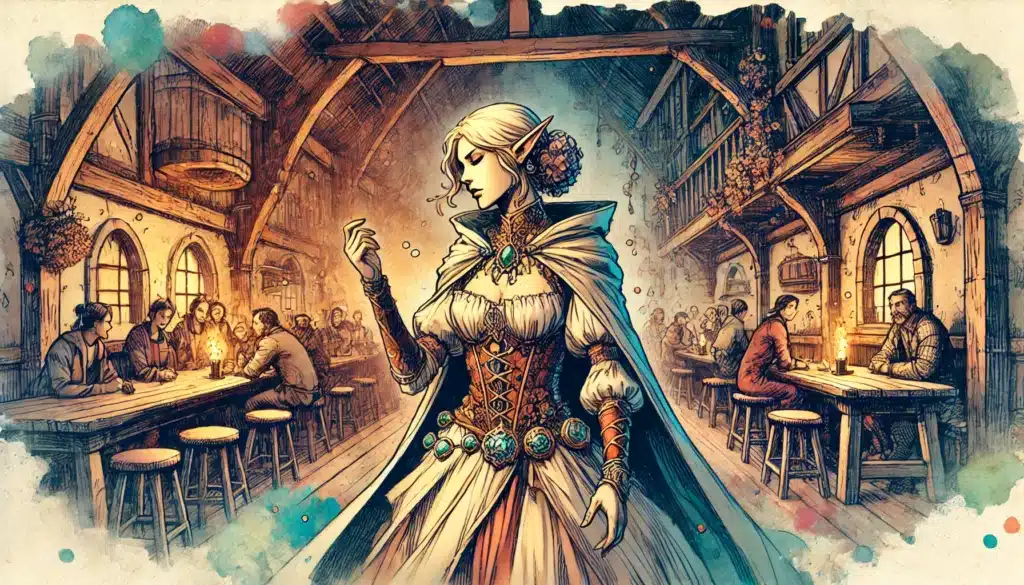
What Are Character Flaws in D&D?
Flaws in Dungeons & Dragons are the cracks in the character’s armor, the shadows that linger in the hero’s psyche, and the whispers of doubt that might plague them. They’re an essential part of what makes a character feel real within the fantastical tapestry of the game world. Unlike traits, which often highlight strengths, flaws are explicit weaknesses, negative characteristics, or internal struggles that can challenge a character.
Far from being mere obstacles, flaws provide rich opportunities for storytelling and roleplaying growth. They humanize characters, making them relatable and multi-dimensional. Whether it’s a knight with a hidden fear of failure or a wizard obsessed with gaining forbidden knowledge, flaws create depth and complexity. They breathe life into a character beyond the feats and abilities written on their character sheet.
In playing out these flaws, characters can go on remarkable journeys towards self-discovery or redemption. For instance, a greedy rogue might eventually learn to value friends over wealth as the campaign progresses. This character growth not only enhances the player’s experience but also enriches the campaign narrative, providing moments of drama and introspection that everyone around the table will remember.
Common Types of Character Flaws
Character flaws in D&D can be categorized into various types, such as physical imperfections, emotional struggles, moral weaknesses, and dark pasts. Each type offers different avenues for exploration within a campaign, presenting unique challenges and story arcs.
⚔️ Fantasy RPG Random Tables Books
Make life as a Gamemaster easier…
If you play Dungeons & Dragons, Pathfinder, or other fantasy RPGs, this
RPG random tables series
is packed with encounters, NPCs, treasure, and more. Available in eBook or print—either way, you’ll have a wealth of adventure ideas at your fingertips.
Physical Flaws: These are flaws related to a character’s body or capabilities. Such imperfections might include a limp, poor eyesight, or chronic pain, altering how a character approaches certain tasks and encounters. They may force the character to rely on more than just brute strength or agility, showcasing ingenuity and resilience.
Emotional Flaws: These involve a character’s feelings and emotional responses. An example might be a tendency towards jealousy, which could cloud judgment and lead to conflict. Emotional flaws provide fertile ground for role-playing, pushing characters to confront and manage their emotions, often leading to growth.
Moral Weaknesses: These are ethical or moral failings, such as dishonesty or cowardice, that make for interesting dilemmas. They test a character’s values and beliefs, presenting opportunities for moments of either redemption or further descent into darkness.
Tragic Pasts: Flaws arising from a character’s history, like surviving a catastrophic event or losing a loved one, affect their present behavior. These past shadows can guide their decisions, motivating them toward certain actions out of guilt, revenge, or protection.
Here is a table summarizing common character flaws, their manifestation in roleplay, and the challenges they create:
| No. | Flaw | Manifestation in Roleplay | Challenges Created |
|---|---|---|---|
| 1 | Arrogance | Frequently dismisses others’ ideas | Can alienate allies, lead to isolation |
| 2 | Fear of Fire | Avoids or panics in presence of flames | Limits options, tactical disadvantage |
| 3 | Addiction | Seeks out harmful substances or behaviors | Compromises judgment, creates dependency |
| 4 | Greed | Places material wealth over relationships | Can damage trust and group dynamics |
| 5 | Short Temper | Easily provoked into anger | Escalates conflicts unnecessarily |
| 6 | Cowardice | Avoids confrontation, prone to flee | Can leave allies unsupported in combat |
| 7 | Recklessness | Acts without considering consequences | Heightens risk for self and group |
| 8 | Distrustful | Sceptical of others’ motives, hard to form alliances | Limits cooperation and teamwork |
| 9 | Obsessive | Fixates on a particular object, task, or person | Limits focus, ignores broader goals |
| 10 | Stubborn | Refuses to change opinions despite evidence | Hinders group adaptability |
| 11 | Guilt-Ridden | Haunted by past mistakes, often self-deprecating | Can hinder self-esteem and decision-making |
| 12 | Pessimistic | Expects the worst outcomes | May demoralize party, resist hope or optimism |
Flaws should be seen as a means to enrich roleplaying experiences, rather than inhibit them. They present ripe opportunities to evolve characters, adding emotional weight and gravity to the story. Adopting flaws that meaningfully intertwine with your character’s broader narrative ensures they resonate deeply, making every role-playing session memorable.
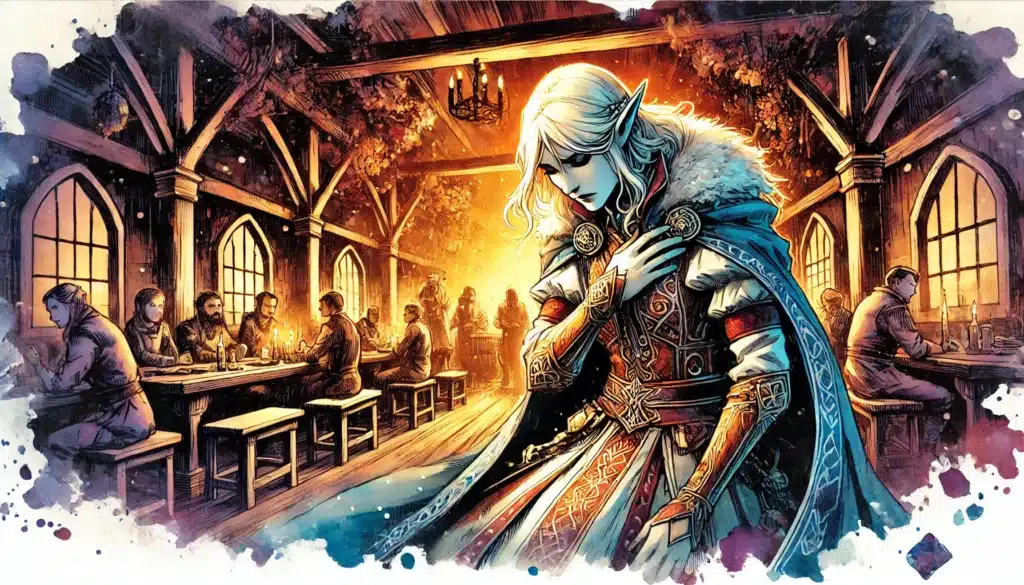
How to Choose Meaningful Flaws
When it comes to choosing character flaws, opt for those that add layers without rendering the character unplayable. Flaws should be chosen with care to create compelling narratives and character growth opportunities, without undermining the campaign experience.
Balance is crucial when selecting flaws. They should create interesting moments and conflicts rather than bog down the character with unnecessary hindrances. For instance, a character terrified of the ocean might hesitate at seaside adventures but eventually muster courage when the stakes are high enough. Flaws should be manageable hurdles that characters can address, overcome, or accept over time.
It’s important to ensure that flaws align with the character’s background or class, enriching the story rather than skewing it. A paladin with a secret doubt in their faith would offer a rich inner conflict that ties back to their religious duties. Similarly, a thief with an ethical code not to harm innocents brings contrast to their otherwise shadowy profession, inviting debate and introspection.
Here are some guidelines for choosing effective flaws:
- A flaw should create tension, not ruin gameplay.
- Flaws should tie into a character’s background or class.
- Avoid flaws that are just excuses for bad behavior.
- Select flaws that allow room for growth and redemption.
- Be mindful of party dynamics when choosing flaws.
- Choose flaws that can springboard storytelling and character development.
- Don’t let flaws overshadow personality or skills entirely.
- Look for how flaws might be both a challenge and a motivator.
- Make sure flaws provide role-playing depth and opportunities.
- Don’t use flaws as a get-out-of-jail-free card for conflict.
- Ensure flaws resonate with the campaign theme and setting.
- Balance multiple flaws—avoid overly complex characters too soon.
- Discuss flaws with your DM to ensure they fit the game.
- Reflect a flaw’s influence in your character’s actions consistently.
- Use flaws to test and explore deeper themes.
A well-chosen flaw can become central to your character’s arc, offering a continual source of storytelling potential. Through overcoming or coming to terms with these flaws, characters grow, offering not just entertainment, but a deeply satisfying narrative journey.
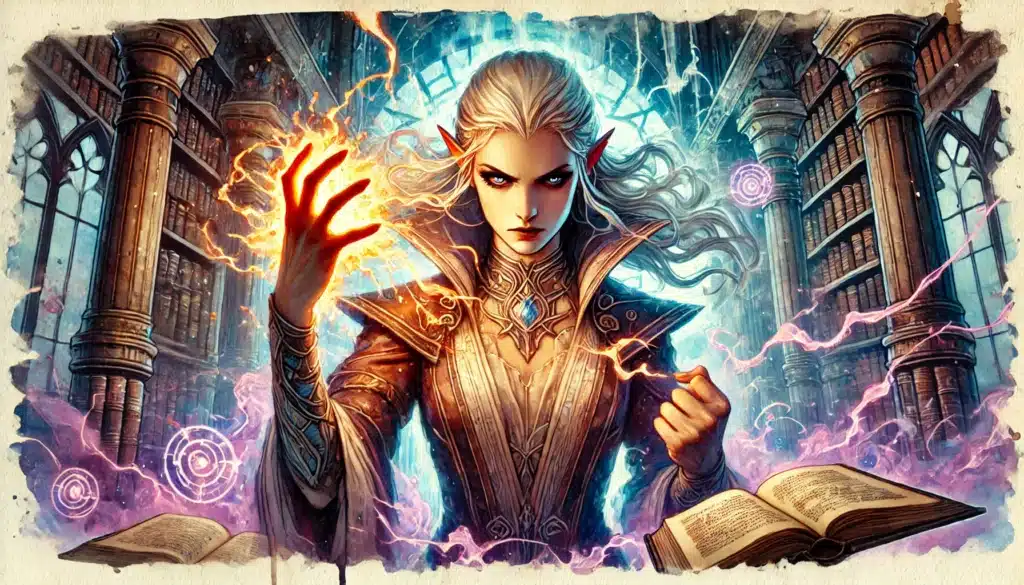
DND Flaws vs. Traits: The Key Differences
Flaws and traits in D&D work in tandem to create dynamic characters that feel like they belong in the richly woven tapestry of the game world. They form the yin and yang of character development, essential elements that work together to create multi-dimensional figures. Flaws add depth by highlighting internal struggles, while traits showcase a character’s strengths, making them more engaging and relatable. This balance is especially evident when examining monk class strengths and weaknesses, as their speed and agility contrast with their limited durability and reliance on melee combat. By embracing both flaws and traits, players can craft characters that feel authentic and narratively compelling.
Flaws manifest the challenges and vulnerabilities a character faces, providing a counterbalance to their traits. They ensure that a character isn’t simply a collection of strengths, making them flawed heroes with their unique struggles. By contrast, traits reflect the positive characteristics, quirks, and values that define who the character is, defining how they contribute and connect to the group and the story.
The key is understanding how these elements interplay to shape the way characters engage with their surroundings. Traits might dictate action and behavior under ideal circumstances, showing how a character would strive to influence the world. On the other hand, flaws become apparent when pressure mounts and things are less than perfect, showing how characters attempt to cope when the odds are against them.
Try my AI Tabletop RPG generators...and an extensive library of content!
Comparing Traits and Flaws in Roleplay
In role-playing scenarios, traits serve as the guiding principles and strengths a character leverages, while flaws push against these, testing their limits and character growth. A character’s bravado might be endearing and rally allies, but their flaw of impatience might lead to rash decisions, counteracting their otherwise admirable courage.
Traits are the mechanisms that propel a character forward in their actions and decisions. They draw players into embracing the role and crafting memorable interactions. Conversely, flaws introduce the stakes, the conflicts, and the unpredictable elements, coloring the narrative with intrigue.
Here is a table comparing example traits and flaws to illustrate how they can complement each other in storytelling.
| No. | Trait | Complementing Flaw | Storytelling Interaction |
|---|---|---|---|
| 1 | Courageous | Impulsivity | Heroic actions lead to trouble due to jumping into danger blindly |
| 2 | Compassionate | Overprotectiveness | Conflicts arise when protecting friends becomes stifling |
| 3 | Intelligent | Arrogance | Brilliant ideas are often disregarded due to being too self-assured |
| 4 | Ambitious | Greedy | Quest motives questioned, alliances strained due to ambition |
| 5 | Charismatic | Manipulative Tendencies | Friendly interactions viewed with skepticism, impacting relationships |
| 6 | Disciplined | Prejudice | Rigidity in beliefs leads to confrontation with differing viewpoints |
| 7 | Reliable | Stubbornness | Trust gained is tarnished when not accommodating alternative methods |
| 8 | Idealistic | Naivety | Trust in all leads to exploitation, revealing harsh realities |
| 9 | Patient | Indecisiveness | Missed opportunities due to reluctance to act |
| 10 | Loyal | Jealousy | Conflict when devotion leads to possessiveness in relationships |
| 11 | Resourceful | Secretive | Gains are offset by lack of trust due to hoarding information |
| 12 | Diplomatic | Passive | Conflict resolution occasionally bogged down by reluctance to act |
Balancing these aspects makes a character not just a participant in the game but a key player in the unfolding story. A character with a healthy mix of both positive and negative attributes feels more real, offering endless roleplaying possibilities and storylines for players to explore.

When Flaws and Traits Overlap
Sometimes, the line between a character’s traits and flaws blur, creating nuanced and intricate personalities. A well-placed trait can become a flaw depending on the context or situation. This overlap injects unpredictability into roleplay, adding layers to the character’s narrative.
For instance, a character known for their “cleverness” might overthink every scenario, becoming paralyzed with indecision when action is needed. A steadfast “loyalty” might turn into blind adherence, clouding judgment and leading to problematic situations. Understanding when and how these shifts occur can create some of the most memorable story moments in a campaign.
Here are examples of traits that can double as flaws:
- Clever → Overthinks everything
- Loyal → Blindly follows orders
- Brave → Recklessly throws themselves into danger
- Honest → Blunt and tactless
- Ambitious → Steps over others to get ahead
- Thoughtful → Overly cautious and misses opportunities
- Generous → Easily exploited by others
- Confident → Becomes complacent
- Methodical → Slow to adapt or make decisions
- Proud → Resistant to ask for help when needed
- Relaxed → Comes off as indifferent or lazy
- Humble → Undermines self-worth
These blurred lines make characters all the more interesting and realistic, offering rich stories of triumph and struggle. They challenge players to explore different facets of their characters, constantly evolving in response to new challenges and experiences.
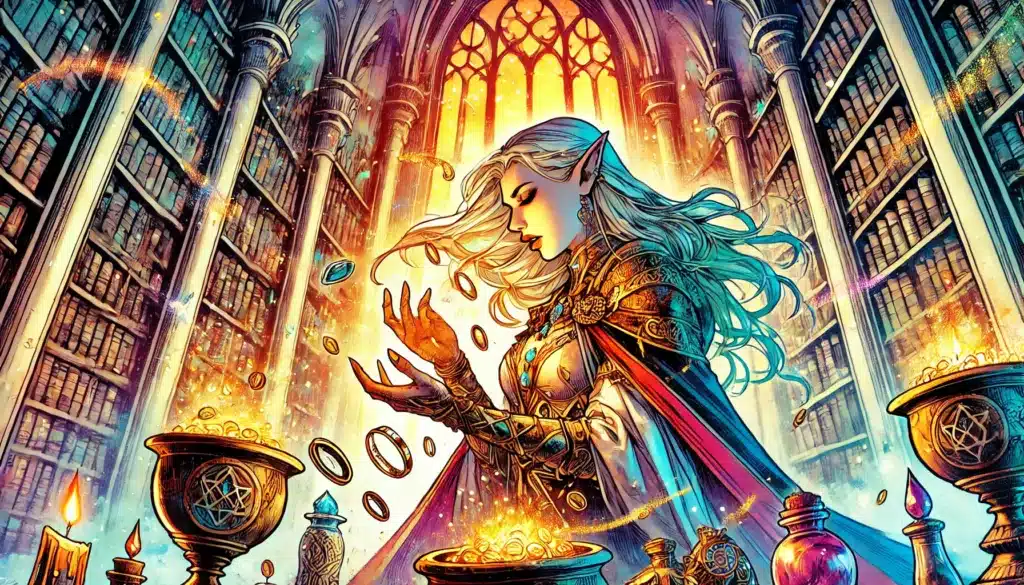
Using Flaws and Traits to Drive Character Development
Flaws and traits are not just characteristics to check off a list—they’re the engines of character growth and development. Through the interplay of flaws and traits within roleplay scenarios, characters evolve, learning from their mistakes, adapting to new challenges, and enhancing their unique stories.
This evolution forms the backbone of a compelling character arc, where personalities shift, relationships deepen, and motivations change. Characters aren’t static; they’re dynamic entities influenced by the adventures they undertake. Developing a character through their flaws and traits creates engaging storylines that resonate and endure beyond the campaign sessions.
Roleplaying Character Growth Through Flaws
Character development through flaws can lead to transformative growth arcs that feel authentic and compelling. As characters confront their shortcomings, they face opportunities for personal growth—overcoming their fears, battling insecurities, or embracing their imperfections. Through these journeys, flaws provide profound storytelling moments.
For example, a character with a deep-set “fear of water” might initially avoid maritime adventures. But when a dear friend is in peril at sea, the character could find the courage to face their fear, dive into the unknown, and grow in the process. Such confrontations create memorable moments that define a character’s arc and endear them to other players.
Below is a table illustrating potentials for growth arcs and resolutions from various character flaws:
| No. | Flaw | Growth Arc | Resolution |
|---|---|---|---|
| 1 | Fear of Water | Learns to swim to save a friend | Overcomes fear, discovers hidden strength |
| 2 | Isolationism | Opens up to team interactions | Builds trust and discovers supportive community |
| 3 | Greed | Sacrifices treasure for a greater cause | Gains respect and new perspective on wealth |
| 4 | Pessimism | Believes in a better outcome with consistent support | Reframes mindset, adopts new outlook |
| 5 | Reckless | Faces consequences, learns to plan | Adjusts approach, balances covertness and audacity |
| 6 | Indecisiveness | Cultivates decision-making skills through experience | Gains confidence in personal choices |
| 7 | Cowardice | Finds bravery in protecting loved ones | Redefines concept of courage |
| 8 | Distrust | Finds a person worthy of trust | Begins fostering more open relationships |
| 9 | Stubbornness | Learns to adapt through failed endeavors | Embraces flexibility, welcomes change |
| 10 | Arrogance | Humbled by setbacks, fosters humility | Seeks collaboration, respects allies’ input |
| 11 | Secretive | Realizes importance of sharing vital information | Integrates more openly with group |
| 12 | Overthinking | Learns to embrace spontaneity | Attains balance between planning and action |
Character growth invigorates roleplay, making each session layered and engaging. Exploring these arcs encourages players to immerse themselves in the storytelling and connect with the characters on deeper levels.
⚔️ Fantasy RPG Random Tables Books
Make life as a Gamemaster easier…
If you play Dungeons & Dragons, Pathfinder, or other fantasy RPGs, this
RPG random tables series
is packed with encounters, NPCs, treasure, and more. Available in eBook or print—either way, you’ll have a wealth of adventure ideas at your fingertips.
Traits That Change Over Time
As characters face challenges and grow, the traits that define them can also evolve. This change reflects the dynamic nature of player characters in a campaign—a testament to their ability to adapt and progress alongside the unfolding story. Acts of courage, betrayal, triumph, and sorrow shape how a character sees the world and redefine who they are over time.
Perhaps a naive character, once bright-eyed and full of wonder, grows cautious after a betrayal by a trusted ally. Similarly, a self-serving rogue might begin to learn the value of camaraderie and loyalty after countless adventures with their party. These evolving traits add depth to a character’s journey, resulting in arcs that captivate and inspire.
Here’s a list of ways traits can change over time:
- A naive character grows cautious after betrayal.
- A selfish rogue learns to care about their party.
- A cowardly fighter finds their courage.
- An aloof wizard becomes more empathetic.
- A judgmental hero learns tolerance through experience.
- A zealous cleric opens up to different beliefs.
- A cynical bard gains optimistic perspective.
- A reclusive ranger embraces community.
- A hot-headed barbarian finds inner peace.
- A prideful knight gains humility through loss.
- A withdrawn druid reconnects with society.
- A protective paladin relinquishes control to empower others.
- A stoic warrior discovers joy in small victories.
- A reserved rogue becomes more outspoken.
- An overconfident sorcerer develops measured prudence.
By exploring how traits shift and evolve, characters remain fresh and courageous in their pursuits. This dynamism keeps the narrative vibrant, ensuring that no two sessions are ever the same while generating endless possibilities for fascinating storytelling.
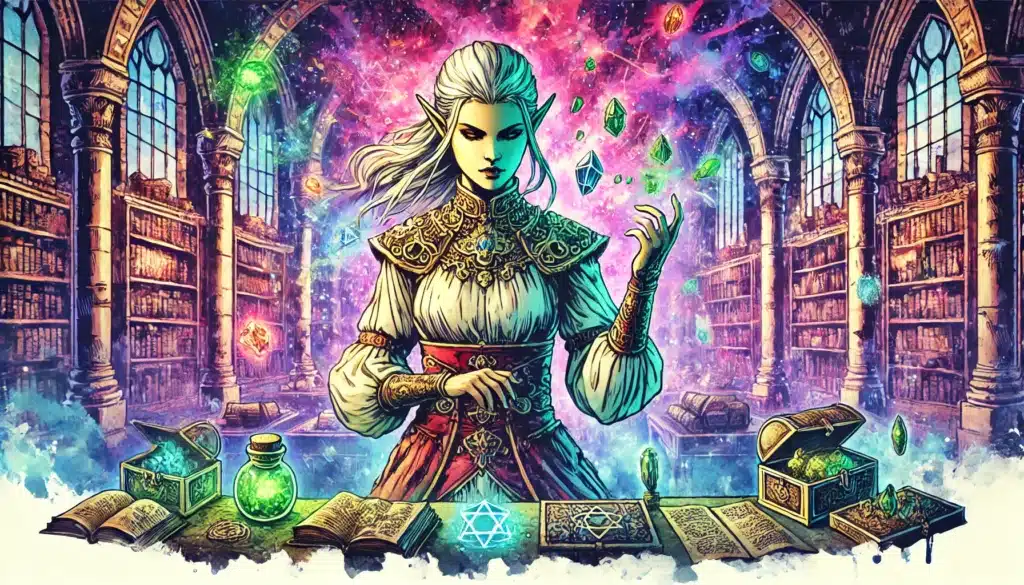
Common Mistakes When Choosing Flaws and Traits
Creating a character in D&D is an art, and like any artist’s work, there can be missteps along the way. One of the more common mistakes players make is a misunderstanding—or even misuse—of flaws and traits. When these key elements are not carefully selected or well-thought-out, characters can feel flat or their roleplay potential can be significantly inhibited.
Flaws and traits that are too generic or overused can make characters feel one-dimensional, predictable, and, quite frankly, a bit boring. The same goes for traits that seem tacked on without much thought or consideration for the character’s larger story. Such selections can diminish personal engagement in the role-playing experience and stifle creativity in the process.
Overused or Cliché Flaws and Traits
Certain flaws and traits crop up so frequently that they’ve become almost cliché, robbing the character of their sense of individuality and uniqueness. Falling into these pitfalls can make a character predictable, reducing opportunities for imaginative storytelling and compelling roleplay.
Characters with the endlessly used “tragic orphan background” might evoke sympathy but lack substance unless given deeper aspect or unique twist. Similarly, always opting for the wise-cracking rogue archetype without variation or depth can lead to repetitive—and even tiresome—scenarios. The problem arises when players continuously draw from the same uninspired well.
Making a cliche flaw or trait more unique involves injecting elements that surprise and engage others at the table. Adding unexpected history, unusual hobbies, or distinctive motivations can transform an overdone concept into something fresh and exciting.
Here is a table highlighting overused flaws/traits, why they’re problematic, and how to make them more unique:
| No. | Overused Concept | Problematic Aspect | How to Make It Unique |
|---|---|---|---|
| 1 | Tragic Orphan | Common backstory cliche | Add joyful foster family; explore found families |
| 2 | Greedy Rogue | Predictable motivations, lacks depth | Infuse love for art or nature as softer interests |
| 3 | Brooding Barbarian | Lacks versatility, predictable responses | Explore mundane hobbies (gardening, baking) |
| 4 | Edgy Assassin | Often unoriginal, minus emotional tie-ins | Include moral code or cultural purpose |
| 5 | Wise Old Wizard | Regurgitated trope | Add youthful wonder or aspire to learn new skills |
| 6 | Rebellious Teen | Lack of maturity can be tiring over played time | Develop gradual, nuanced understanding of authority |
| 7 | Arrogant Noble | Can alienate or cause friction within group | Reveal deeper virtues through secret kindness |
| 8 | Neutral Loner | Risks disconnect from party dynamics | Promote loyalty to a single person/item instead |
| 9 | Mute Warrior | Limits interaction, roleplay options | Use storytelling through sketch/art, silent vows |
| 10 | Tortured Paladin | Loop of redemption with no closure | Gain solace; mentor another character’s growth |
| 11 | Single-Minded Monk | Often depicted one note | Integrate familial tie or previous allegiance |
| 12 | Misanthropic Scholar | Overemphasis on study over humanity | Cultivate eccentric friendships with those overlooked |
Infusing creativity into characters liberates them from tired stereotypes, creating rich, nuanced, and altogether fascinating personas.
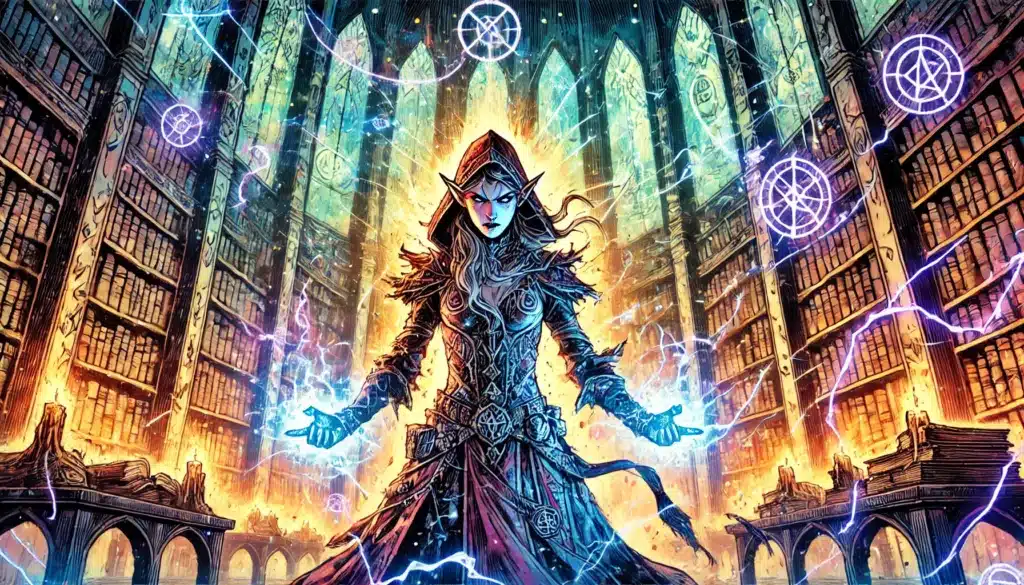
Playing Flaws in a Way That Adds to the Game
When it comes to roleplaying flaws, the key is to enrich the game without disrupting it. Flaws provide texture and depth to a character, but they should never derail teamwork or fun. Playing a “selfish” character doesn’t have to mean acting as a detriment to group cohesion. On the contrary, a flaw well-played should inspire story arcs that draw characters closer and compel storytelling.
To this end, players should ensure flaws contribute to roleplay, not merely excuse poor behavior. Use flaws to add layers and encourage interaction, allowing them to mold how a character interprets and reacts to the campaign rather than using them to evade or disrupt it. Players should also communicate with the DM and other players about how these flaws will come into play, ensuring they fit seamlessly with the larger story arc.
Here are some best practices for roleplaying flaws:
- Make sure your flaw doesn’t derail the group’s fun.
- Don’t use flaws as an excuse to be disruptive.
- Communicate with your DM about how your flaw will come into play.
- Use flaws to create tension, not outright conflict.
- Let flaws inspire character growth throughout the campaign.
- Adapt flaws to fit the game’s themes and settings.
- Use flaws as stepping stones to deeper stories.
- At times, let flaws provide humor or levity during sessions.
- Ensure flaws don’t stifle cooperation or camaraderie.
- Periodically reassess how a flaw is affecting play.
- Balance flaws with traits and strengths.
- Always maintain respect for the other players’ experiences.
Flaws are powerful tools that can fuel creative storytelling and character development when used effectively. By weighing how a flaw impacts gameplay and enhances the story, players can ensure a positive experience for everyone involved.
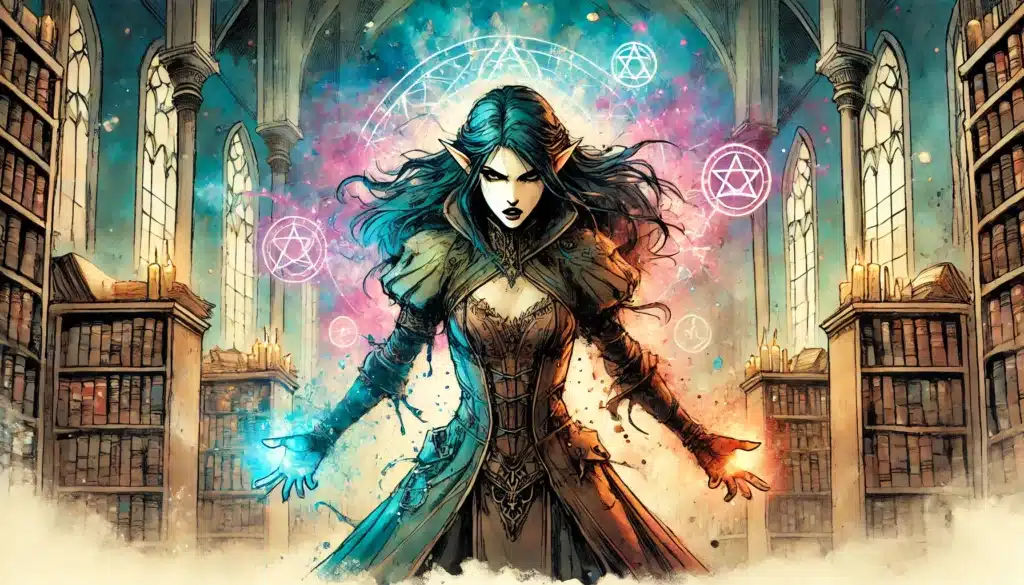
Final Thoughts on Flaws vs. Traits in D&D
When creating a D&D character, balancing flaws and traits is crucial for crafting not just a personality but a full-fledged person who feels as though they live and breathe within the campaign world. Flaws aren’t merely setbacks to be overcome; they are catalysts for growth, elements that add depth and resonance to every act of bravery and every decision your character makes. Embracing flaws as more than just mechanical drawbacks transforms them into the pillars of a compelling narrative, an opportunity for epic heroism or redemption.
Traits and flaws together make characters more real, engaging fellow players and audiences alike in vivid storytelling. They provide opportunities to explore different sides of a character, challenge existing beliefs, and evolve over the course of the campaign. Indeed, these defining qualities are often the reasons why certain characters endure in the minds of players long after the campaign has concluded.
A well-crafted character doesn’t shy away from weaknesses nor relies solely upon their strengths. They bravely walk the line between potential and limitation, creating possibilities for unexpected alliances, poignant stories, and hard-won wisdom. Encouraging players to infuse their characters with both virtues and vices can transform an ordinary game into an unforgettable experience where everyone can contribute to the collective narrative.
In the end, the key to unforgettable characters lies in a perfect blend of contradictions—strengths and flaws, laughter and struggle, light and shadow. So next time you gather your dice and open your character sheet, remember to breathe life into each detail and let them come alive with unpredictability, stirring drama, and, most importantly, endless adventure.

